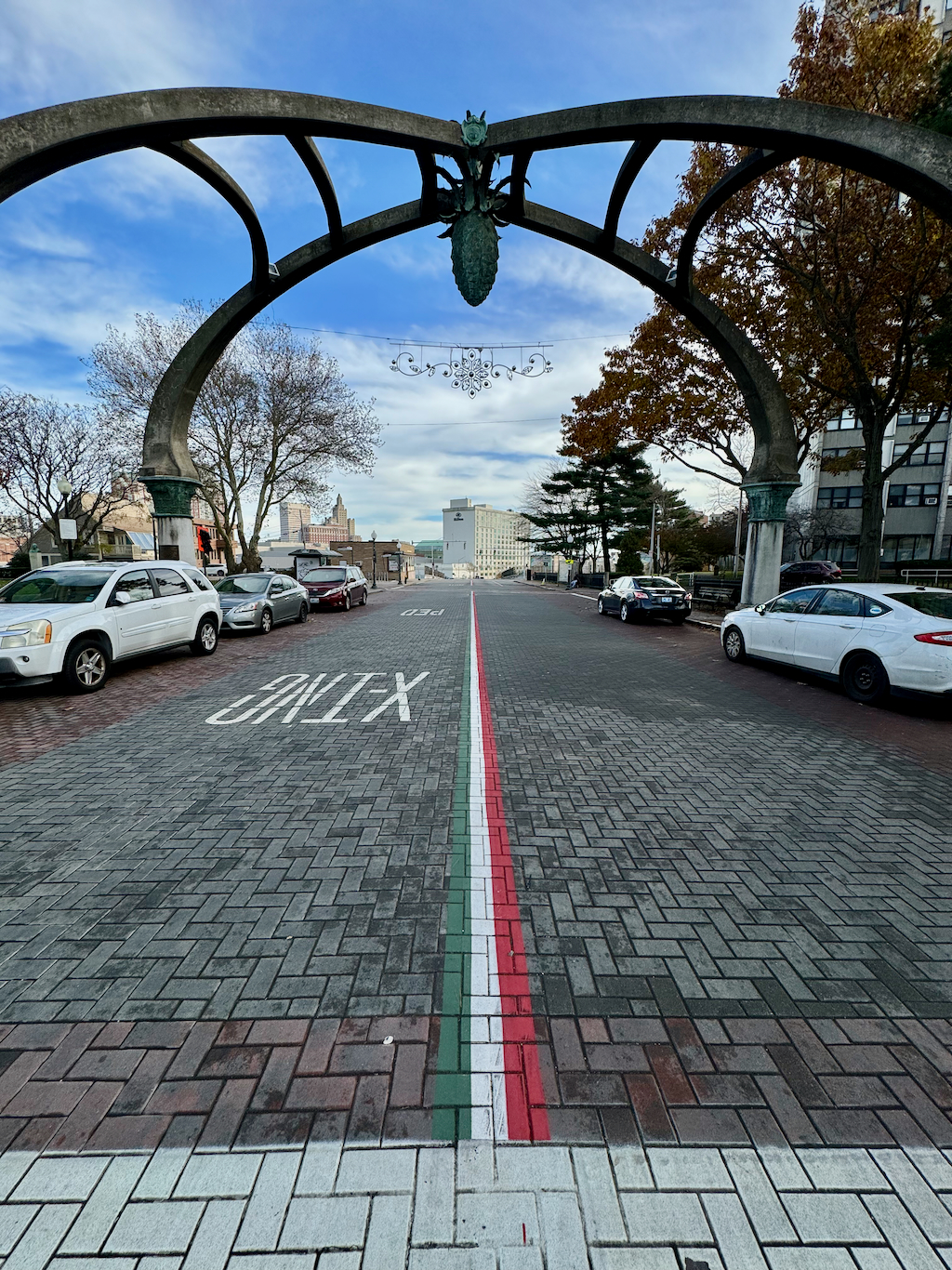After hobnobbing with some charming Rhode Island folks on Martha’s Vineyard, we found ourselves inundated with suggestions for Providence, Rhode Island hotspots, with Federal Hill’s Pastiche topping the list.
However, amidst the gastronomic gems of the region, a peculiar site loomed – the iconic pine cone (or is it a pineapple?) perched atop the gateway arch on Atwells Avenue. The burning question that demands resolution: Is it a pine cone or a pineapple?
In this exploration, let’s finally lay this debate to rest.
What is La Pigna Archway?
The La Pigna Archway is an iconic landmark in Providence, Rhode Island. It is a gateway to the historic Federal Hill neighborhood, which is known for its Italian-American culture and cuisine.
The archway was designed by Albert Veri Associates and installed in the 1970s as a part of the area’s refurbishing during the first term of Mayor Vincent “Buddy” Cianci, Jr, the city’s first Italian-American Mayor.
It is made of concrete and brick, and it features a large sculpture at its center, which is the subject of much debate as some claim it is a pinecone while others claim it is a pineapple.

Where is La Pigna Archway?
The La Pigna Archway is located at 116-112 Atwells Ave, Providence, RI 02903.
Worth noting: another la pigna type of sculpture can be found atop the water fountain in DePasquale Plaza (although that pinecone is definitely much more open and obviously more of a pinecone).

Settling the La Pigna Archway debate once and for all
Upon reaching the vicinity of La Pigna Archway, I swiftly disembarked from the car, leaving Brad on standby as my trusty wingman, while I ventured closer to scrutinize the enigmatic structure. I was determined to give it the once-over, ensuring my senses weren’t playing tricks on me.
I circled it, assessing from various angles, even daring to spend some time staring up in the middle of the street like a lost tourist in order to give this thing a comprehensive examination.
After a dedicated session of scrutinizing the sculpture, let me declare with unwavering certainty – this is unequivocally a pine cone, and not, as some might whimsically argue, a pineapple. Let me share my findings.
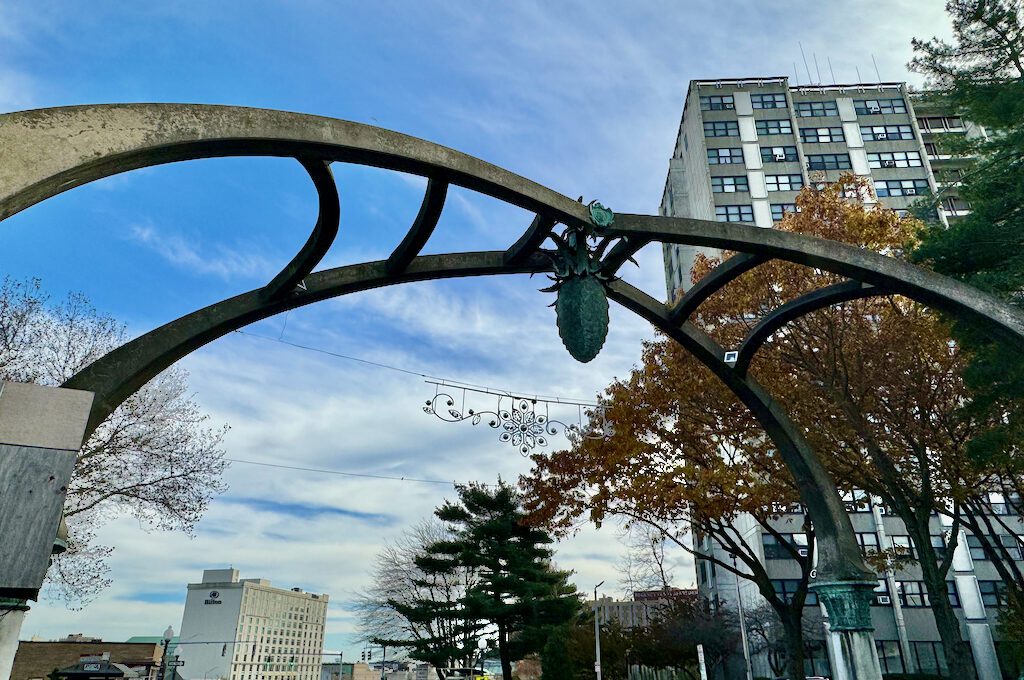
To kick off our investigation, let’s dissect the nomenclature: La Pigna Archway. Now, for those not fluent in Italian, “pigna” translates to pinecone, and the linguistic breadcrumb trail is quite unmistakable. One might argue that names can be misleading, but in this case, the moniker itself is practically handing us the answer on a linguistic silver platter.
However, for the skeptics among us, let’s entertain the notion that nomenclature can be fallible. Are there other breadcrumbs leading us down the pinecone path? What other compelling evidence exists to assert that, beyond a shadow of a doubt, this is indeed a pinecone?
Upon closer inspection of the sculpture’s silhouette, the mystery begins to unravel, revealing the unmistakable contours of a specific botanical entity. The sculpture gracefully tapers at the base, mirroring the characteristic shape of none other than a pinecone.
For those still harboring doubts, a side-by-side comparison photo emphatically drives the point home, leaving little room for interpretation. The evidence, it seems, is sculpted in stone – or, in this case, archway.
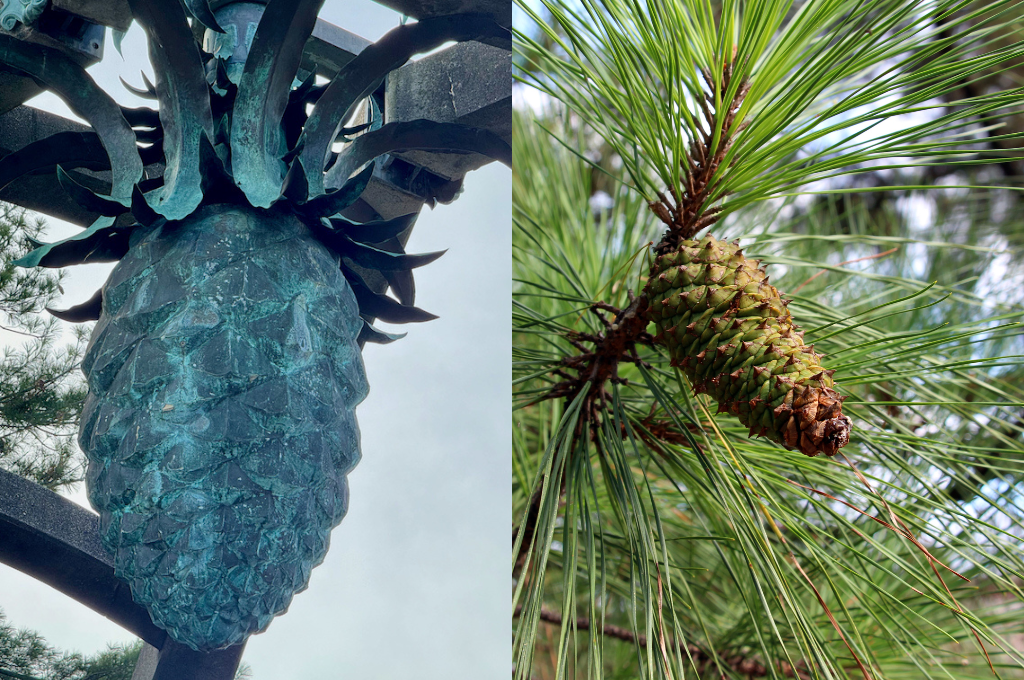
For the skeptics who may entertain the notion that this is a sculpture of a pineapple, a quick examination of its distinctive silhouette is all it takes to dispel such notions.
Unlike the elegant tapering observed in a pinecone, the plump and unabashedly rotund form of a pineapple is a study in contrast.
The comparison is as clear as day – the pineapple falls far short in the tapering department, not even coming close to the graceful convergence seen in the sculpture of the regal pinecone.
Adding to the analysis, the sculpture’s elongated, triangular scales form a distinct spiraling pattern, characteristic of a pinecone. This differs markedly from the hexagonal fruitlets of a pineapple.
The sculpted shape speaks volumes in favor of the pinecone persuasion.

Expanding our investigation into the intricacies of pineapple anatomy, a crucial detail emerges upon examining the lower extremities. Cast your gaze to the base of a genuine pineapple, and you’ll encounter a distinct flattened core – a feature that stands in stark contrast to the decidedly dissimilar foundation of our enigmatic sculpture.
The bottom of this artful creation bears no resemblance to the telltale core of a pineapple. In fact, it flaunts a form quite alien to the botanical blueprint we associate with pineapple. This blatant deviation from pineapple norms further solidifies the argument against any pineapple pretenses, leaving us with a sculpture that, despite its archaic allure, remains faithful to the pinecone lineage.
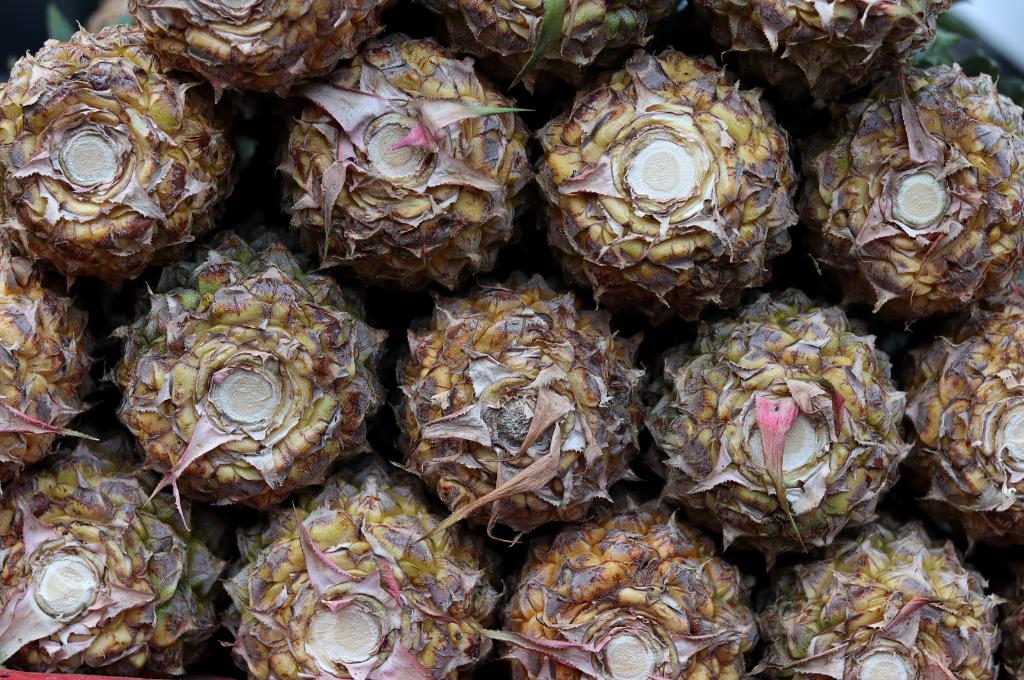
Even if we were to entertain the notion that the alleged pineapple is positioned upside down, there is no confusion when we consider the distinct leaves of a pineapple. Unlike the curved, bromeliad leaves characteristic of a pineapple, the sculpture showcases a different orientation altogether.
If we were to adhere to pineapple anatomy, those unmistakable leaves should be adorning the bottom side of the sculpture in this scenario. Yet, a careful examination reveals that the curvature is amiss, and the leaves, if we were to stretch our imagination in that direction, would be facing the wrong way.
So those comparisons to pinecones and pineapples should clearly show you that this sculpture is definitely not a pineapple.
But there is also the fact that the pinecone is a known symbol of Italian culture.
In ancient Roman architecture and art, the pinecone, often depicted as a decorative motif, symbolized fertility, regeneration, and abundance. The pinecone’s symbolic repertoire doesn’t stop there; it extends its metaphorical branches into the realm of hospitality, where it is considered a symbol of welcome and generosity
And if you have ever visited the Vatican you may have seen the Vatican’s Cortile della Pigna (Court of the Pine Cone), where there is a massive bronze pinecone sculpture, known as the “Pigna.”
It originally stood in the Roman Pantheon and was moved to its current location during the Renaissance. It’s displayed in the opposite direction but looks very similar to the sculpture in Providence Rhode Island only that pinecone is a little bit more opened.
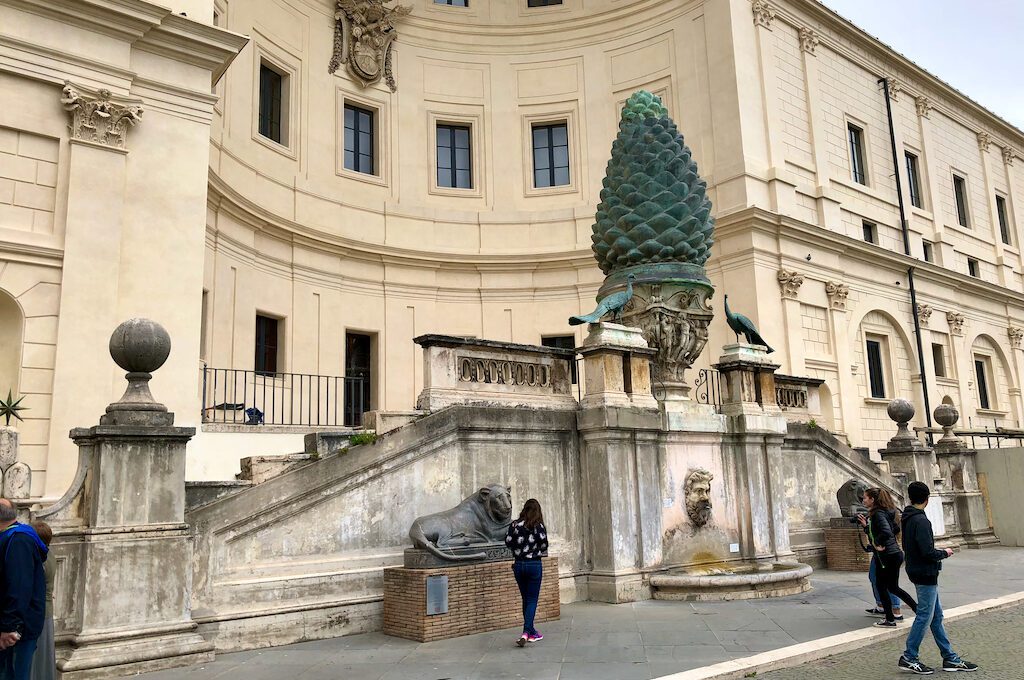
Finally, you can just go with what the official website says.
Final word
In the vast landscape of art and cultural symbolism, this beloved sculpture in Providence, Rhode Island, unmistakably reveals itself as a pinecone, regardless of the analytical lens through which it’s examined.
Yet, in the whimsical dance of perspectives and interpretations, it becomes one of those perennial enigmas where the debate seemingly finds its eternal abode.
For those pondering which camp to join in this botanical conundrum, perhaps there’s no better solution than to embark on a pilgrimage to the site itself. Step into the shadow of the sculpture, let the details unfold before your eyes, and allow the nuances of form and history to guide your judgment.
Daniel Gillaspia is the Founder of UponArriving.com and the credit card app, WalletFlo. He is a former attorney turned travel expert covering destinations along with TSA, airline, and hotel policies. Since 2014, his content has been featured in publications such as National Geographic, Smithsonian Magazine, and CNBC. Read my bio.


